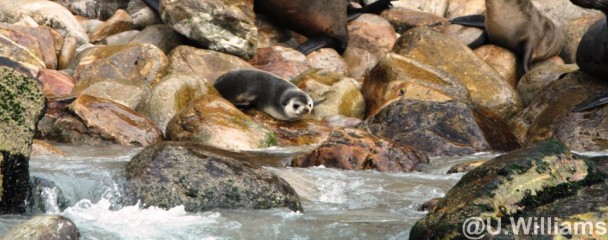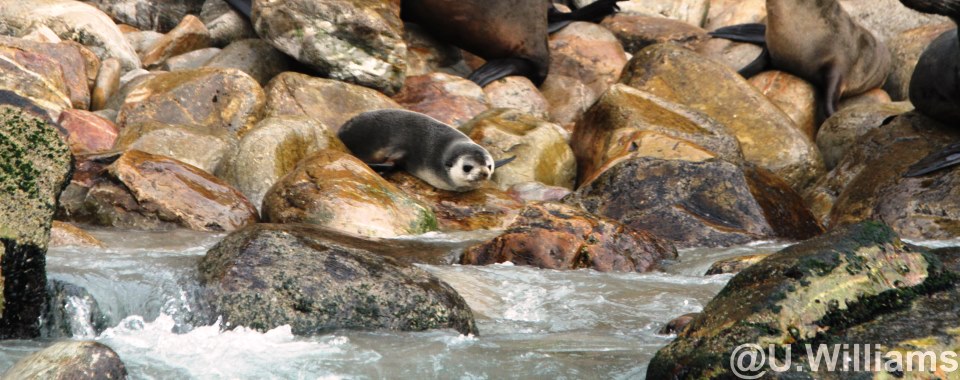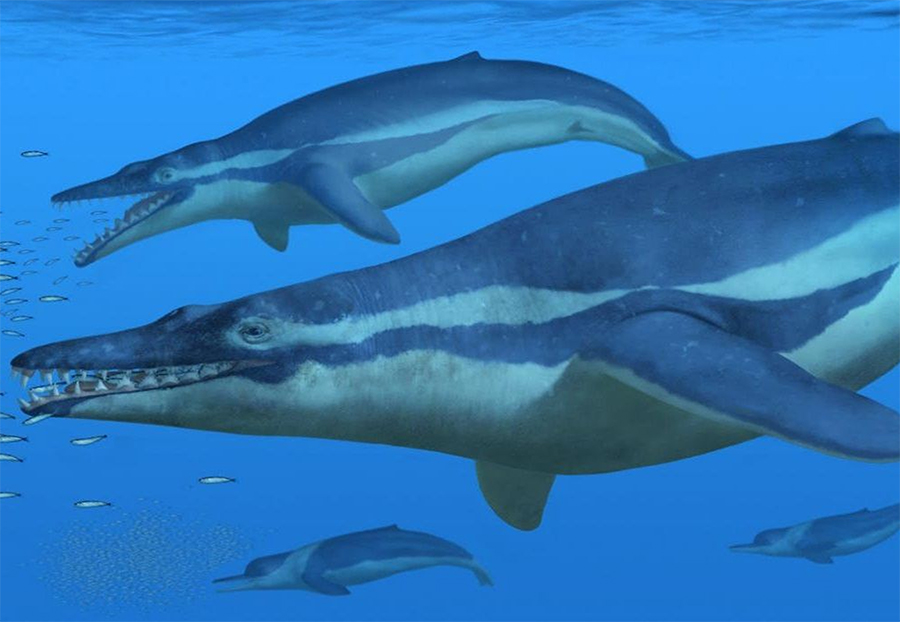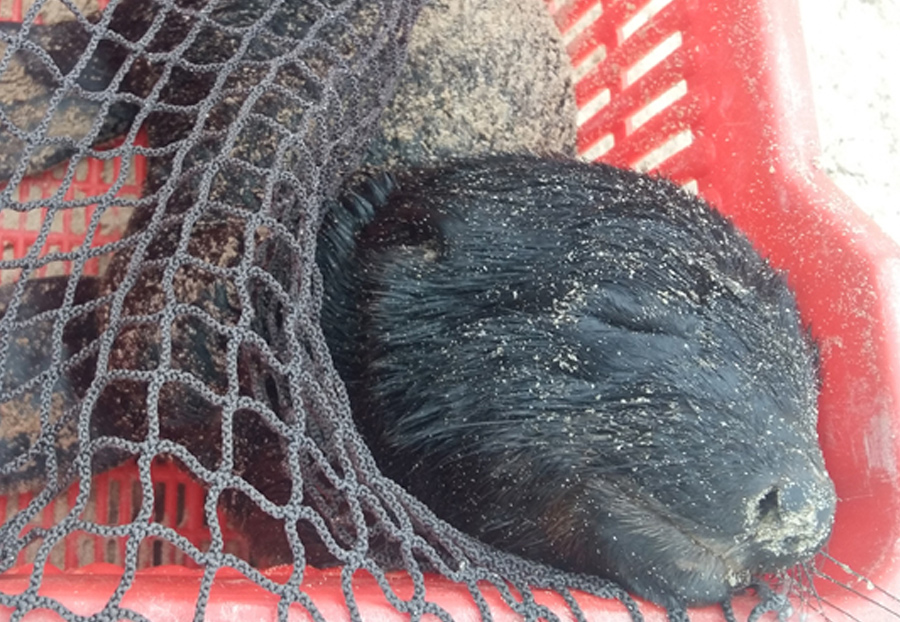Facts on the Subantarctic Fur Seal

Around the world there are 33 different species of seals (Pinnipeds). In South African waters there are 7 different seal species found. The Plettenberg Bay resident specie is the Cape Fur Seal (Arctocephalus pusillus) with visiting Elephant Seals (Mirounga leonina) and Sub-antarctic Fur Seals (Arctocephalus tropicalis).
The Subantartic Fur seal is mainly found in the southern parts of the Indian, Pacific and Atlantic Oceans so when seen in South African waters its special. They are smaller than the Cape Fur Seals. Subantartic Fur Seal males grow to 2m weighing 160 kg and the females 1.4m weighing 50 kg. Both sexes have distinctive, creamy-orange chests and faces. Their bellies are more brownish. Males have a dark grey to black back and females are lighter grey. They have a characteristic pale “facial mask” that distinguish them from all other Fur Seals. This is how we can identify them at the Cape Fur Seal colony in Plettenberg Bay.
The Subantartic Fur Seals hunt in shallow waters at night for fish and squid. Their main predators are sharks and Orcas. There is about 30 000 Subantartic Fur Seals in the Subantartic region giving them least concern status on the red list. They were hunted almost to extinction in the 19th century for their fur. All colonies are now protected, and Subantartic Fur Seals have begun colonizing new locations and growth rates have been estimated at 13-15%. There appear to be no major threats currently facing the species.
In Subantartic Fur Seals, females reach sexual maturity at 4-6 years of age and males at 4-8 years, although males do not achieve territorial status until 10-11 years of age. The breeding colonies of the Subantartic Fur Seal are generally found on temperate islands in the South Atlantic and Indian Oceans north of the Antarctic Polar Front. The largest colonies occur at Gough, Amsterdam and the Prince Edward Islands. The Subantartic Fur Seal usually hauls out on rocky shores from November to January in order to breed. The adult males arrive at the breeding grounds just prior to the females and form territories, usually containing between 4-12 females. They defend these territories by means of fighting, vocalisation and bluff. The females usually arrive in November-December and their pup is born a few days later. Subantartic Fur Seal breeding colonies overlap with Antarctic Fur Seals (Arctocephalus gazelle), habitat and there is evidence of some inter-breeding between these species at Marion and Macquarie Islands.




